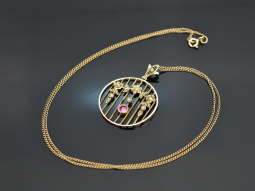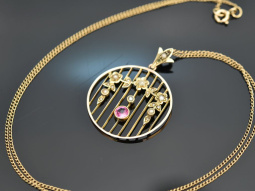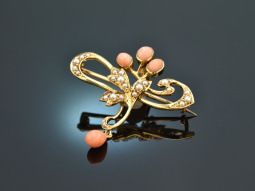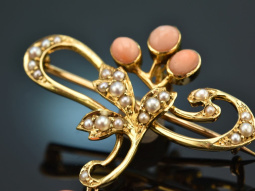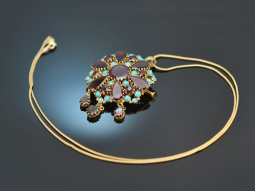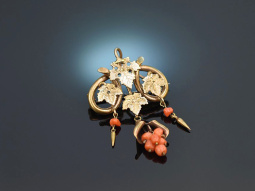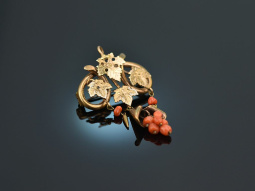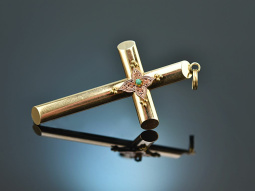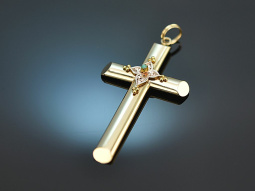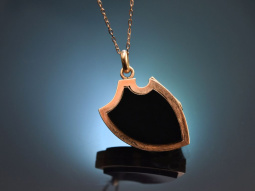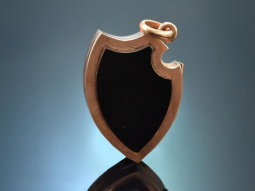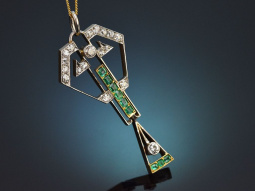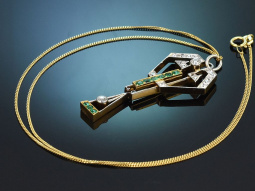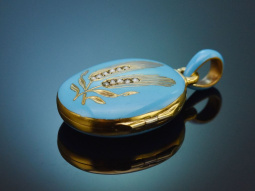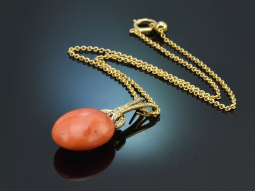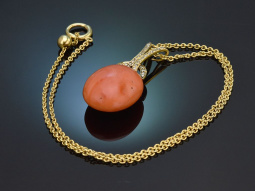Antique Pendants
(until around 1930)
With an antique pendant, you are opting for a versatile piece of jewellery that impresses with its classic craftsmanship and symbolic power. High-quality materials and the charm of times gone by make these objects stand out from the crowd of modern jewellery and instantly conjure up an individual look. Take a look at three centuries of unique jewellery art with us! Find out more »
Antique pendants - stylish and atmospheric at the same time
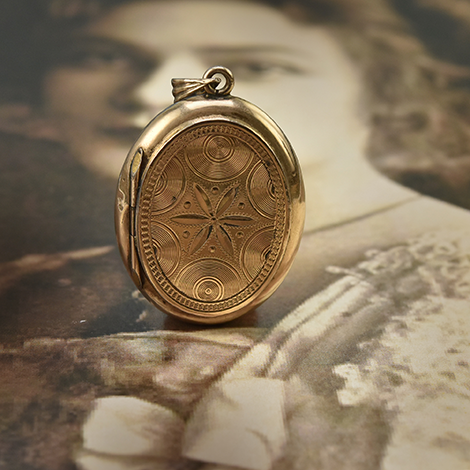
Medallions and pendants - antique or modern - often have a personal sentimental value for the person wearing them. This is due to the original function of these pieces of jewellery: they were worn as amulets or talismans to which protective properties were attributed. If you now wear an antique pendant, this function can be enhanced even further, as it is an authentic historical object that conveys memories.
Antique pendants have a further attraction: they are often equipped with a brooch on the back, which opens up further ways of wearing them. In addition to the option of combining the piece of jewellery with different chains, it can also be attached to clothing as an antique brooch.
A small place for memories - the locket
Medallions were traditionally used to store locks of hair, miniatures or other mementos. Since the invention of photography, the direct image of a loved one can also be kept inside a locket and worn close to the heart. The personal engraving of such a piece of jewellery reminds you of a very special connection even decades later and creates the opportunity to leave a tangible piece of your own history to your descendants.
The cross
Antique cross pendants have always symbolised faith. As an expression of one's world view, they have a special symbolic power that can be carried to the outside world through this piece of jewellery. Whether as a loving gift for a christening or wedding or as a daily companion and talisman, an antique cross pendant not only conveys your interest in antique jewellery, but also your own beliefs.
Towards the end of the 20th century at the latest, the cross also became a decorative fashion accessory and can now be worn more freely and not necessarily as an expression of religious beliefs.
Ancient pendants as contemporary witnesses
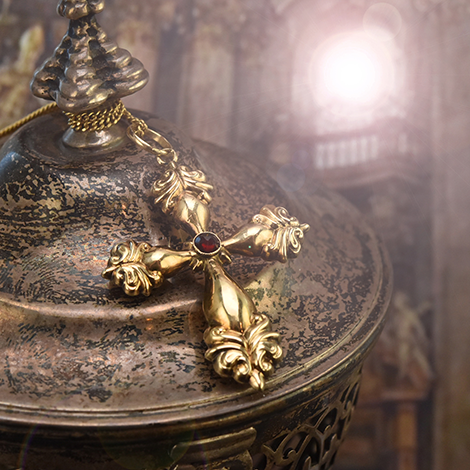
At Halsbandaffaire we present antique pendants from three centuries, each a testimony to its time and the specific style.
The pendants of the Biedermeier period are often cartouche-shaped, i.e. designed as an ornamental frame that provides space for cameos, gemstones or miniatures. Antique garnet pendants are also very common in this period, which are set with the then particularly popular bohemian garnet.
The eclectic designs of historism are difficult to summarise in their design. However, what they all have in common is an orientation towards models from the past such as antiquity, the Renaissance and Rococo.
The turn of the 20th century saw the emergence of Belle Époque and Art Nouveau, an innovative design language characterised on the one hand by delicate, diamond-studded motifs, and on the other by referring to models from nature and incorporating them into curved, enamel-covered pendants and medallions. For example, antique amethyst pendants are created, which - supplemented with other coloured stones and pearls - depict fairytale-like scenes and have been preserved for us today as wearable works of art.
The Art Déco renounces delicate work from the 1920s onwards and focuses on designs that do not skimp on diamonds and coloured stones. The dawn of modern life and the resulting enthusiasm for machines, speed and technology led to a very special aesthetic, which was reflected in strict, geometric jewellery designs. Elaborate antique ruby pendants are combined with pompous antique earrings and sparkle next to spotlights and candlelight.
